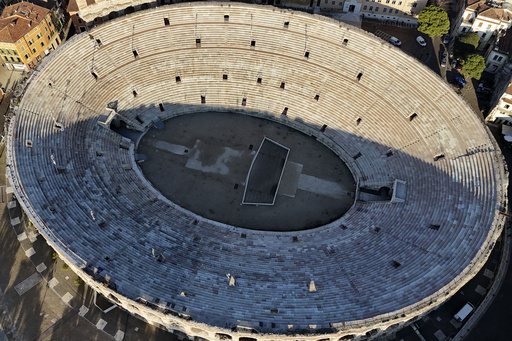
MILAN — The upcoming Winter Olympics, labeled as the Milan Cortina Games, will actually utilize a vast region of northern Italy for its various events. The Games scheduled for 2026 will cover more than 22,000 square kilometers (almost 10,000 square miles), making this the most extensive Winter Olympics and Paralympics in history.
The planning includes a contingency to hold bobsled, luge, and skeleton competitions in Lake Placid, New York, should the sliding center in Italy not be completed in time. The primary locations for the events include Milan, a key industrial hub in northern Italy, and the upscale resort town of Cortina d’Ampezzo, situated around 280 kilometers (170 miles) northeast of Milan. Athletes will also compete in three additional mountain clusters, with the grand finale held in Verona, the largest city in the northeastern Veneto region.
For the first time, the Winter Games will fully adopt the cost-containment strategies initiated by International Olympic Committee President Thomas Bach, with most events taking place in pre-existing venues. Below are some key locations where events will be hosted:
Milan will serve as one of the main hubs. The opening ceremony is set to occur at San Siro Stadium, a famous venue with a capacity of 80,000 that houses the city’s two prominent soccer clubs, AC Milan and Inter Milan.
Another venue, the Santagiulia Ice Hockey Arena, once merely a construction site, is now rising impressively above the southeastern outskirts of Milan, expected to welcome NHL players back to the Olympics. After the Games, this privately funded multipurpose venue could become the next site for the ATP Finals, as the current agreement with Turin is expiring.
The Ice Park will encompass several events at the Fiera Milano exhibition center, including speed skating in addition to some ice hockey matches. The Ice Park will consist of temporary structures spread across four pavilions of this extensive venue.
The Forum di Milano, a multipurpose facility mainly used for sports like basketball and ice hockey, will host short-track speed skating and figure skating competitions. This 12,500-capacity venue was renovated recently and is well-prepared to accommodate the world during the Games.
Turning to Cortina, the Tofane Alpine Skiing Center, known for its breathtaking views and rich Olympic history, will be the site for women’s Alpine skiing. It is recognized as one of the premier slopes globally and regularly features in the women’s World Cup circuit.
Curling events will take place in the Olympic Ice Stadium, a significant remnant from the 1956 Winter Olympics held in Cortina. This arena has garnered fame not just for its sports but also for its appearance in a James Bond film from the 1980s.
A new sliding center is under construction in Cortina for the bobsled, luge, and skeleton events. However, completion is uncertain, prompting the IOC to require backup plans, including the possibility of relocating disciplines to Lake Placid, New York.
The Stelvio course in Bormio, regarded as one of the most challenging tracks in Olympic history, will host men’s Alpine skiing. Additionally, this location will present ski mountaineering as it makes its Olympic debut.
Livigno, often referred to as the “Little Tibet” of the Italian Alps, will cater to youth-oriented sports like snowboarding and freestyle skiing, with numerous medals at stake.
Predazzo, surrounded by stunning Dolomite peaks, will host ski jumping events, known for its historical significance in Nordic skiing. Close by, Tesero will provide facilities for cross-country skiing.
In Anterselva, biathlon competitions will be staged in an arena that has a longstanding connection to the sport, regularly hosting world championships. This picturesque town reflects a unique cultural mosaic, with a majority German-speaking population.
Finally, the closing ceremony will be held at the ancient Verona Arena, a Roman amphitheater that has been a focal point for grand operatic performances over nearly two millennia.

